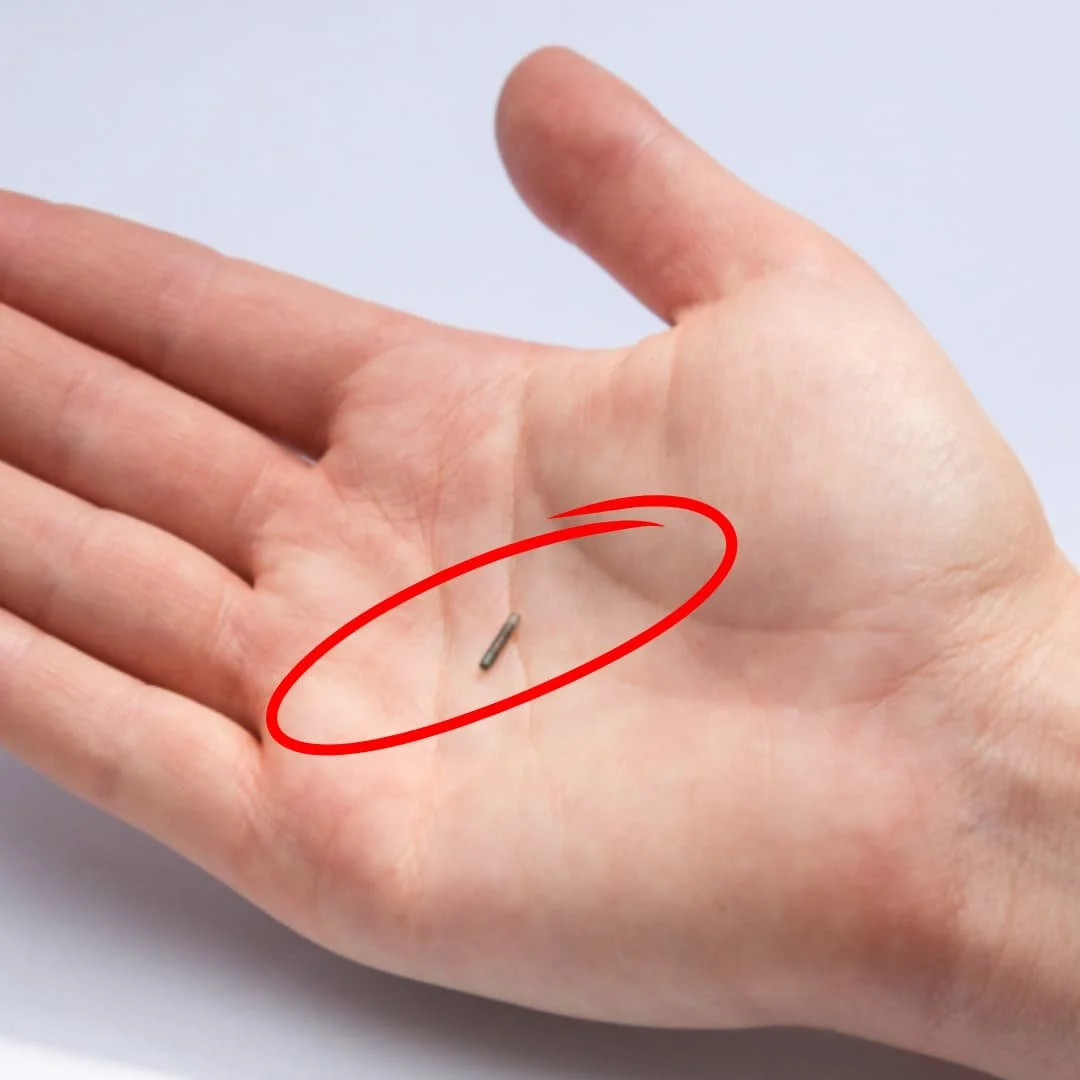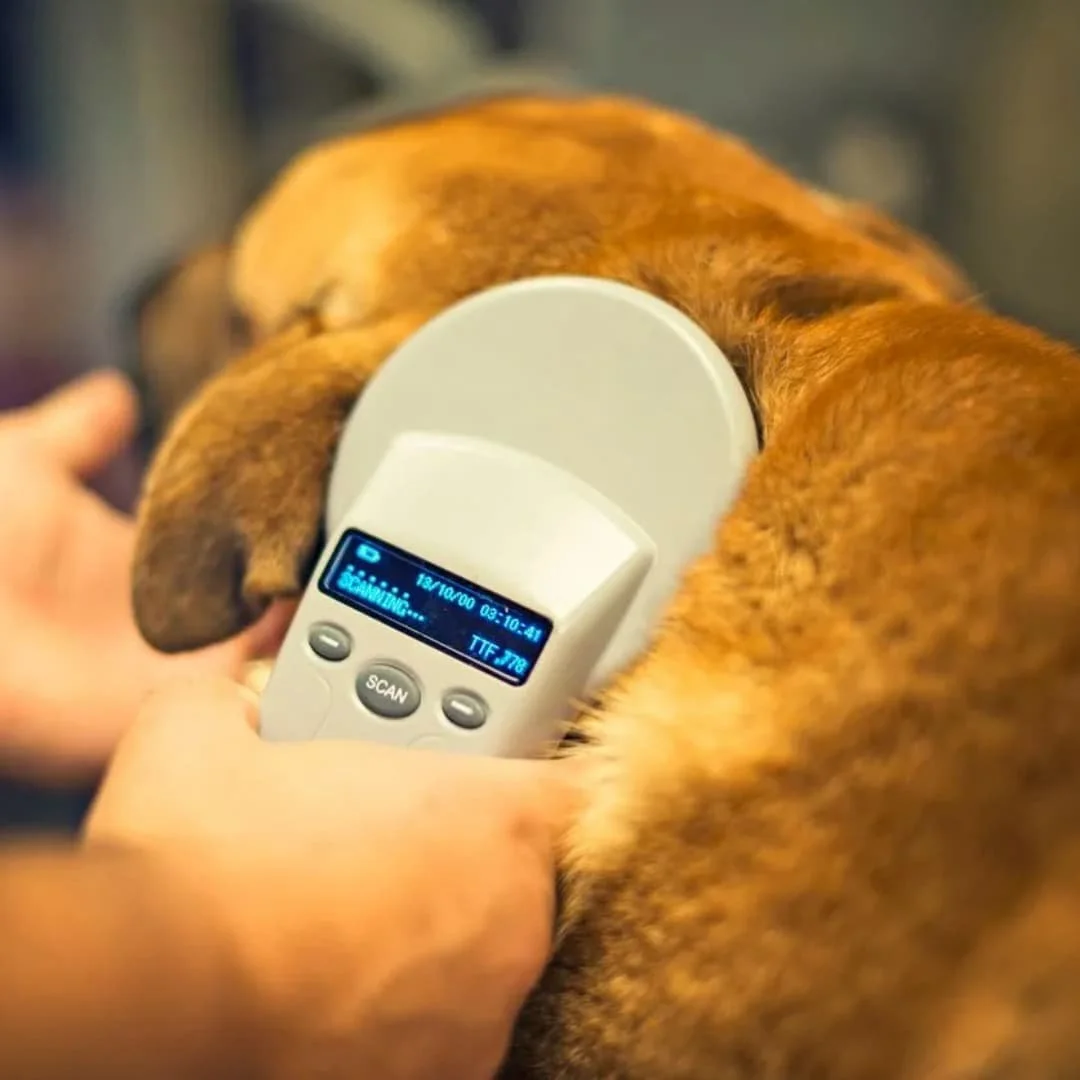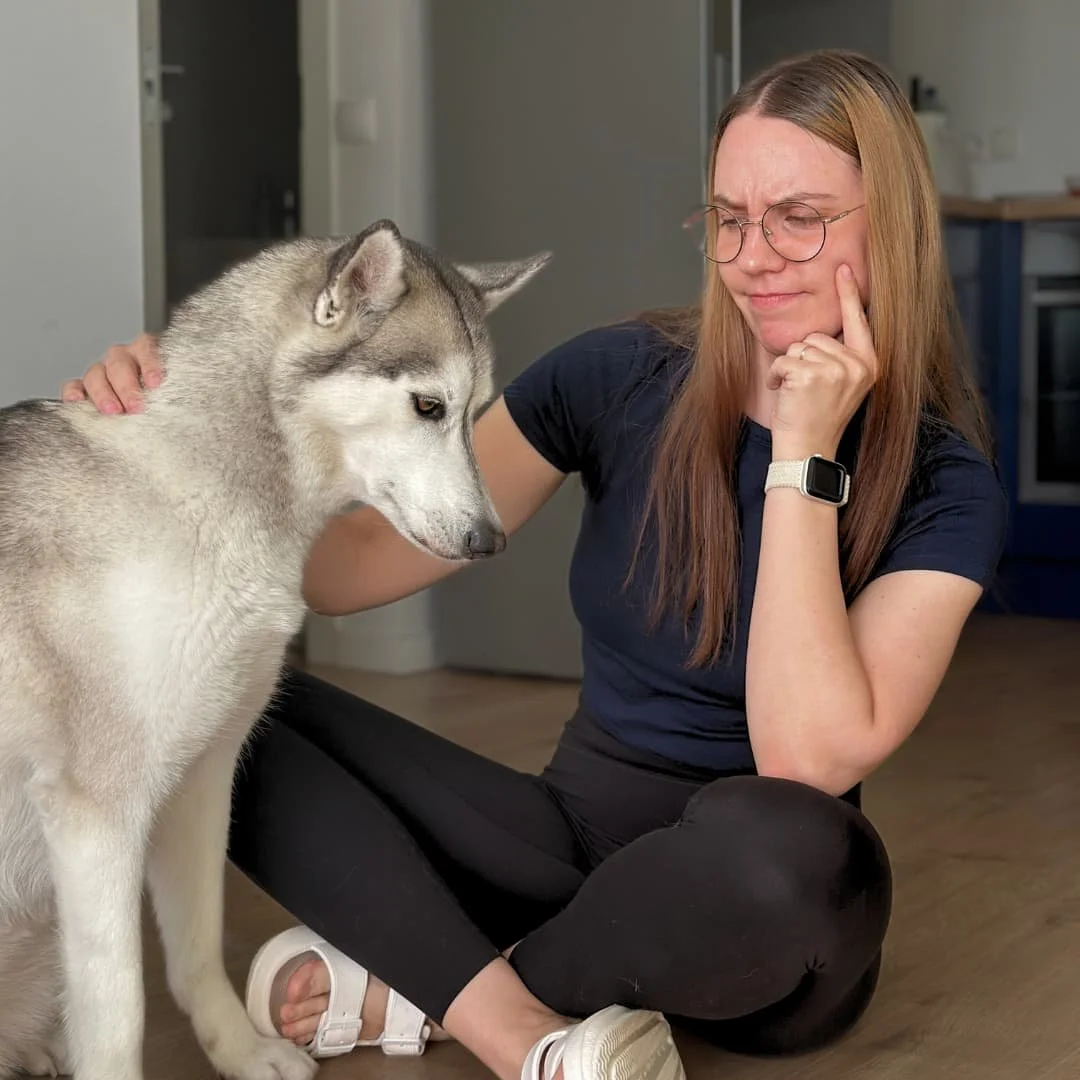Microchip vs pet GPS tracker FAQ
There’s often some confusion around microchips and pet GPS trackers. Do they do the same thing? Would you need only on and be done or get both? What each one actually does?
To make things a little easier and more clear without having to go through 10 different pages to find some answers we decided to make a FAQ. This should help you sort out, what either of them does and doesn’t do and help you figure out, how a microchip and a dog GPS tracker can work together.
What is a microchip?
A (pet) microchip, is a radio-frequency identification device (RFID), the size of a grain of rice, that is implanted just under the skin in between the shoulder blade area.
Every microchip has a unique ID code, which will show up on the scanner screen.
The pet owner’s contact info will be findable through that ID.
2. What is a dog GPS tracker?
A pet GPS tracker is a little device that often can be attached to your dog’s (or cat’s) collar or harness. Through GPS and cellular networks the tracking device can provide location updates about your pet’s whereabouts.
Some typical features dog GPS trackers have:
Location updates/ live tracking
Setting up “safe zones”
Location history
Extra features (light, sound, health monitoring etc)
3. Are microchip and dog GPS the same?
No, they are not. Microchip and GPS trackers are different tools and they serve a different purpose.
A pet GPS tracker lets you actively locate your pet, view location history and track it’s current whereabouts through live tracking.
What microchip does, is just providing identification, not location. It is passive, it doesn’t have any battery or other features. So it only transmits its ID, when scanned.
4. Can microchip replace a pet GPS tracker?
Depending on what you need really. Like we wrote in the previous question, these two serve a different purpose. So if you want to track your dog’s location or have some other useful features, then GPS tracker is what you want.
Whereas microchip has more like a complementary role. If your lost pet has been found and taken to the shelter or vet, then scanning the microchip can help reunite you two.
5. Do I need to register the microchip?
ABSOLUTELY! Registration is what "makes it work for you. Solely implanting the microchip won’t really do anything unless your contact info is linked with the ID.
When you have registered your dog’s chip, then after scanning it, the owner’s info can be found in the pet registry.
* Keep in mind that you should definitely keep the registration info up to date.
6. Is dog GPS the best choice I can make?
If we’re honest, it depends really. At the end of the day, every tool or pet tech you could get has it’s pros and cons. And so does the GPS tracker.
Pros of a dog GPS:
- preventing your dog running away (safe zone notifications)
- live monitoring
- useful for especially those who like to hike and explore new places with their dogs
- added extra features
Cons of a dog GPS:
- extra cost (and not a small one) because you need an active subscription for the GPS tracker to actually work
- limited battery life and constant charging
- device can get damaged or break (but mostly these devices are very durable)
Take into account your lifestyle, financial preferences, your dog’s character, the risk of your dog running away etc. The dog GPS tracker isn’t almighty or anything, but it definitely is a big help, especially if you have a dog that tends to sneak out for an adventure of its own.
We have been using Tractive dog GPS tracker for 4+ years and tried out different models, from the Dog 4, Dog XL, even their Cat Mini and their newest so far, the Dog 6. If you want to get one for your dog as well, then we have a Tractive discount code for you. 😌
7. Can microchip stop working or move?
Even though it is rare, it is possible that something can happen with the microchip.
For example:
shifting location - even though the chances are super low, then technically there is a slight chance of the chip shifting from its original place.
unreadable chip - when scanner can’t read it, it might mean the chip is damaged or the scanner the vet or shelter uses is broken.
non-registered chip - if you haven’t registered chip or the info is outdated, it fails in its purpose.
malfunction - over (a very long) time, there always stays the chance that the microchip could get damaged somehow or the signal getting weaker.
8. How to choose the best dog GPS tracker?
In today’s market you can find so many different dog GPS trackers. Most of them work through an app and are subscription-based, but there are also some that are the non-cellular ones, like the Aorkuler dog GPS tracker. If you want to know more about the non subscription and no extra cost dog GPS trackers, like Aorkuler, you can read more about it here.
But basically, write down your criterias and non negotiables for the GPS tracker and then let the comparing game begin. Here are some key things for you to compare different brand’s dog GPS trackers:
battery-life and charging intervals;
size of the tracker;
connectivity and coverage;
durability and waterproofing;
extra costs aka the subscription;
needs an app in order to work?
extra features (geofencing, health monitoring, light etc);
general reviews;
warranty, customer support;
9. What to do if the dog GPS and microchip both stop working?
That would be the worse case scenario… The GPS tracker might get lost, the battery might die etc. The microchip most likely will still work. It won’t do any tracking - which means that you cannot look up your dog’s location, but the case for it not working, is super low.
Just in case though, it is always good to set up another safety net just in case. One thing you could try is QR-code pet tag. So in case someone sees your dog wandering, they can scan the QR code and contact you directly. No shelter or vet needed.
For years now, we have used ByteTag and until this day, we are still using it.
10. Should I get both - the microchip and the pet GPS tracker?
Depending on where you live, but did you know that microchip is in fact mandatory in many countries, but a pet GPS tracker is not.
So it might be that you need to get the microchip anyway. But the short answer is no, you most definitely do not need both. But if you do have both or at least one of them, then you already have a better chance of finding your dog if it runs away, escapes or just simply runs off to an adventure of its own and forgets the family hike you were on.
11. What to do if my adopted dog already has a microchip?
Now, if you adopt a new puppy from a breeder or a cute dog from a shelter and they already are microchipped, then:
- you should get the chip’s ID, by asking the vet or the shelter to scan it;
- check from the registry, whose contacts are in there, if there are any;
- update the info with your own contacts (name, address, phone number, email);
- don’t forget to update/renew the info in the registry, if something changes.
Also, do not forget to keep adoption documents in reach. Just in case there’s some dubiety about the ownership of your dog.
12. Can microchip be harmful for dog’s health?
We are by no means experts in this field, so if you are worried about that, then it is best to ask from a professional.
But basically, microchipping is in general considered a very low risk. There could be some rare complications with implanting, because even though not big, it is a medical procedure (injection area swelling, chip unreadability or migration etc).
In general, the benefits of having a microchip, outweighs the tiny risks.
13. What is geofencing and how does it work?
Simply put, geofencing is one of the extra features a pet GPS tracker can have. It means that you can set up virtual boundaries and mark these areas as safe zones. So when your dog crosses it, you’ll get a notification via app or email, that your dog has left the safe area.
If your GPS tracker has that function, then you just need to remember to set it up.
14. How accurate is a dog GPS tracker?
While most dog GPS trackers are quite good with narrowing down your dog’s location, there are a few things to keep in mind.
In ideal conditions, a good pet GPS trackers are pretty accurate to within 3—10m.
But you should remember that there are other factors, that may interfere the signal, like:
some big obstacles - trees, big buildings, tunnels etc;
satellite visibility;
fast direction changes - your dog is too fast to get the in-between location update, so when you do finally get the location, it can actually be outdated info;
update interval (might be too slow);
quality of the antenna or GPS chip - a well made and good quality product should be able to reduce the noise and show the correct location without any problem.
15. Are there other alternatives to microchip and pet GPS tracker?
You’re in luck, because yes, there are some other options you can look into. Of course every device has its limitations, pros and cons, but if you something else than a microchip or a pet GPS tracker fits better for you and your pet, then go for it.
Here are some possible alternatives you can look into:
- QR code pet tag,
- physical tag with your number on it,
- radio frequency trackers,
- bluetooth trackers
16. Can someone steal the microchip or the dog GPS tracker?
So let’s start with the pet GPS tracker first. Can someone steal it - yes. It can get lost (falls off from the collar) or some malicious person physically removes the GPS tracker and steals it.
The dog GPS tracker should in a way also be taken as a valuable device. So make sure to use a durable casing, strong collar, secure it tightly onto the collar.
*Even though many pet GPS trackers don’t have it, but a few have something called tamper alerts. So you will be informed, when the device has been removed.
Now with the microchip - physically you just can’t simply take it off, because it is implanted under the skin. However there is a chance that someone might mess with it, even though it is very rare.
The bigger risk with the microchip is the unreadability or unregistered chip, rather than it being stolen.
Haven’t heard about Pocket Puppy School before?
Pocket Puppy School is more than just a free dog training app – it’s our way of helping every dog and human enjoy life together without stress. 🐶💙
Alongside the app, we share tips, stories, and fun moments on YouTube and Instagram – feel free to join us there too!
And if you ever visit our little shop, you’ll see that it is not your average merch. If you upload a picture of your dog or a special memory of both of you together, we’ll turn it into a custom design that will beat any regular product. Every design is drawn by us, every leash is made by hand, which makes products unique and carries a bit of the love we put into Pocket Puppy School.
By shopping with us, you’re not just getting something cute and personal – you’re also helping us keep the app free for everyone and keep doing what we do here. 🥹🐾





